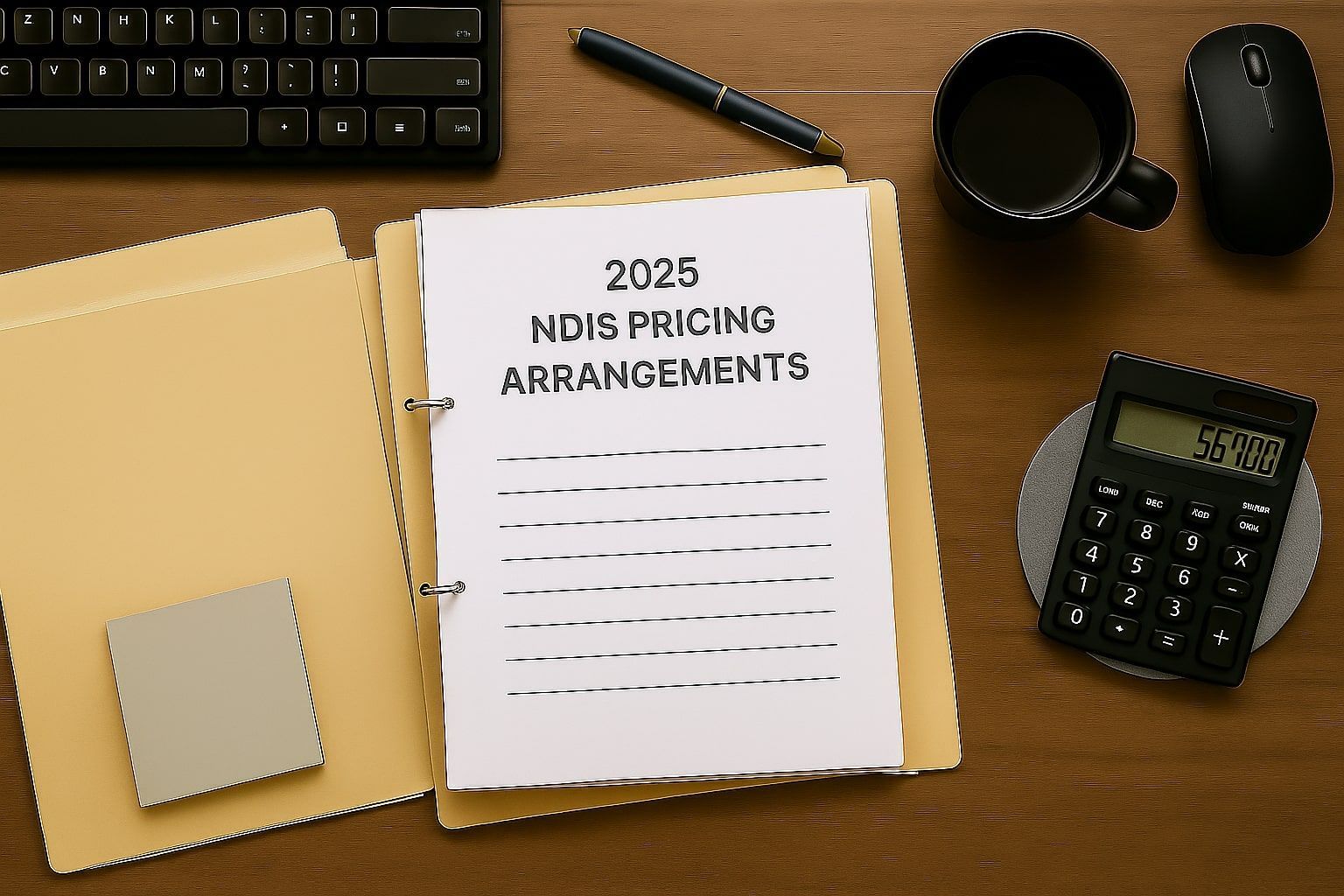Strategies for Managing Funding Delays & Vacant Properties in SDA Housing
Specialist Disability Accommodation (SDA) is one of the most impactful yet complex areas of investment within the Australian Property market. Designed to provide purpose-built housing for people with extreme functional impairments or very high support needs, SDA offers potential for both social impact and long-term returns. However, many investors quickly discover that delivering on this potential isn’t as straightforward as securing tenants and collecting rent.
Two major challenges consistently affect SDA investors: funding delays and prolonged vacancies. Unlike conventional property investments, SDA relies on a highly regulated system in which funding does not follow the property itself but is tied to individual participants who must meet strict eligibility criteria. In many cases, this means properties can remain vacant for 6 to 12 months—or longer—while participants are identified, undergo assessments, or navigate planning delays.
This article provides a grounded, expert-informed look at how investors can practically manage these challenges. By exploring what’s actually working on the ground—from leasing to non-SDA tenants, to hybrid tenancy models, to understanding the role of Appendix H—we aim to offer clear, accurate guidance rooted in policy and frontline experience.
Read Also: Picking The Right SDA Advisor
Understanding SDA Funding
A common misconception among new SDA investors is that funding is attached to the property. In reality, SDA payments are made by the NDIS only when an eligible participant with SDA approval occupies the home. This means a beautifully built, fully enrolled SDA home can legally remain vacant and unfunded until a suitable participant is identified and matched.
The funding approval process for SDA can be lengthy and unpredictable, often taking 6–12 months from the initial referral to confirmed occupancy. Several bottlenecks can delay this process:
- Participants may lack current functional capacity assessments or diagnosis reports
- Their existing plan might not include SDA at all
- Legacy participants from state-run group homes may lose SDA eligibility under newer criteria
- Inconsistent planning decisions from the NDIS
As a result, many homes built “on spec” for the SDA market face significant vacancy risk, particularly if built in oversupplied regions or where specific dwelling types or SDA categories are mismatched with demand.
To avoid overestimating returns, investors must understand that cash flow only begins when a participant with SDA funding is matched, moved in, and compliant with NDIS approvals.

SIL Tenants: Temporary or Lower-Yield Solution
In some cases, SDA investors consider leasing their vacant property to NDIS participants who receive Supported Independent Living (SIL) funding but are not approved for SDA. This approach can help offset some holding costs in the short term, but is not the best for a long-term income strategy, nor a substitute for SDA payments.
It’s important to understand that SIL is a support category, not housing funding. Participants with SIL funding may contribute to rent—typically capped at 25–30% of their Disability Support Pension (DSP) plus Commonwealth Rent Assistance (CRA)—but this is significantly lower than what SDA funding provides.
Key considerations for leasing to non-SDA tenants:
- Financial limitations: Rent contributions usually cover only a fraction of SDA property costs, especially if mortgaged.
- Legal oversight: Participants under guardianship (e.g. OPA or state trustees) often require rental rates to fall below 30% of DSP, or approvals may be denied.
- Support compatibility: Mixing SIL-only participants with SDA-funded tenants may raise operational or behavioural concerns.
- Temporary use: This strategy is best used during the interim period while a suitable SDA participant is identified.
- Potential for SDA Transition: There may be a chance that the SIL tenant/s will qualify for SDA funding, enabling them to transition to SDA tenancy in place.
Some SIL providers may arrange “nominal leases” or pay slightly above market rents, but these arrangements are highly individual.
Leasing to SIL participants can provide short-term occupancy and goodwill, but should not be relied on as a revenue stream comparable to approved SDA placements.
However, leasing an SDA property to SIL providers can work in the long-term as some SIL-funded participants may end up qualifying for SDA and can therefore transition to an SDA tenant in the same property.
Hybrid Tenanting Models: When and How They Work
Some SDA investors facing extended vacancy periods choose to implement what’s often referred to as a hybrid tenanting model—where a property temporarily houses both SDA-funded participants and those who are not or not yet approved for SDA but may still require supported accommodation. While this approach can offer a degree of cost recovery during slower occupancy phases, it must be approached with caution and careful planning.
Hybrid tenancy models, where SDA-funded participants live alongside non-SDA-funded individuals, can be considered in specific circumstances. However, these arrangements require careful planning, compliance with NDIS guidelines, and should be approached with caution to ensure they meet all regulatory requirements.
In these cases, support coordinators may introduce participants with SIL funding or those in transitional stages of their NDIS plans. These participants typically contribute rent from their DSP and CRA allocations, and in some cases, the associated SIL provider may assist with top-up contributions to make the arrangement viable in the short term.
Read also: S48 & S100 and Changes in SDA Housing
What makes this model attractive is that it can reduce the financial burden on both the SDA investor and the SIL provider, particularly when the latter is running a shared support model in the home. However, compatibility between tenants, behavioural profiles, and long-term suitability must be taken into account. Providers need to ensure that the arrangement is clinically and operationally sound—not just financially motivated.
Hybrid tenanting can bridge the gap between having a vacant property and full SDA occupancy when carefully implemented. For investors willing to engage with experienced support coordinators and providers, this model offers a viable pathway to reduce vacancy exposure—especially in regions where demand is developing gradually.
Appendix H – Shared Living with Family or Carers
Appendix H refers to a specific provision within the NDIS SDA Pricing Arrangements that allows eligible participants to reside in an SDA dwelling and share their home with people who do not have SDA approval—such as family members, partners, or friends. This model, often referred to as “shared living with non-SDA residents,” can be beneficial for both participants and property owners, but it is far less straightforward than it may initially appear.
Contrary to how it's sometimes promoted in investment circles, Appendix H is not a guaranteed stream of additional income. It is a pricing flexibility mechanism designed to support participant choice and control. The decision to approve Appendix H arrangements rests with the NDIS and must be supported by a clearly articulated support plan.
From an investor’s perspective, Appendix H can make an otherwise vacant home viable in cases where an SDA-approved participant wants to live with their family but still requires an accessible or specialised environment. In these cases, the NDIS may approve an increased funding rate—typically ranging from $20,000 to $30,000 above the base—depending on the number of bedrooms in the property and its design category. However, this outcome is not automatic and depends heavily on participant planning documentation, goals, and NDIS discretion.
It’s also important to note that Appendix H only applies where the participant themselves is eligible for SDA. The funding does not extend to cover non-SDA household members. Additionally, the property must still comply with SDA design and enrollment requirements.
Market Risk and Demand
While much of the focus in SDA investment tends to revolve around design categories and build specifications, it’s the underlying demand—and location-specific eligibility trends—that ultimately determines whether a property will be financially viable. SDA funding is participant-driven, and even a fully compliant, beautifully built dwelling will remain empty if there are no eligible participants nearby seeking that particular type of housing.
Demand for SDA housing varies widely between regions. Some metropolitan areas and fast-growing regional hubs continue to see strong unmet demand, particularly in the Robust category. However, other markets—especially in outer suburbs and new growth corridors—are already oversupplied with High Physical Support (HPS) stock. In these cases, properties may sit vacant for years, not due to quality or intent, but because the local participant base either doesn’t exist or does not yet exist.
A region may have dozens of SDA-approved participants, but if their needs, behaviours, or co-tenancy preferences don’t align with a particular property’s features or location, the match won’t occur. This is why detailed demand analysis must go beyond raw numbers and consider who the participants are, what their support models look like, and how likely they are to receive new or renewed funding in a changing policy environment.
Many legacy participants who previously received SDA through block-funded models or state-based systems are now facing reassessment under much stricter criteria. This means historical demand figures can no longer be taken at face value. A property that once looked promising based on past SDA numbers may now be far less secure due to shifting approvals.
Investors need to conduct location-specific due diligence—ideally with the guidance of SDA providers, support coordinators, and access to NDIS SDA demand data.
Conclusion
Returns in SDA can be strong—but they are not passive, guaranteed, or immediate. Properties remain unfunded until a participant with SDA approval is successfully placed, and even then, sustainability depends on how well the property continues to meet that person’s evolving needs. Strategies like leasing to SIL participants, exploring hybrid tenanting, or accepting tenants with Appendix H funding may be alternatives to having a vacant property long-term.
The investors who succeed over time are those who understand the broader system: how participants qualify for SDA, what delays can occur in the planning process, how regional demand shifts, and how important it is to build relationships with support coordinators, SIL providers, and participant advocates.
There is no one-size-fits-all solution in this space. Each participant’s journey is different, and so is each property’s path to full occupancy. The most effective approach is one that combines diligence with flexibility—a willingness to collaborate, a deep respect for the participant experience, and an ability to adapt to a sector that continues to evolve.
For those who are already holding SDA properties and feeling uncertain, not all is lost. There is still time to adapt. Reach out to experienced support coordinators, SDA providers, or advisory professionals who understand how to work through complex placements. With the right partnerships, vision, and patience, your investment can still create the impact it was designed for.




